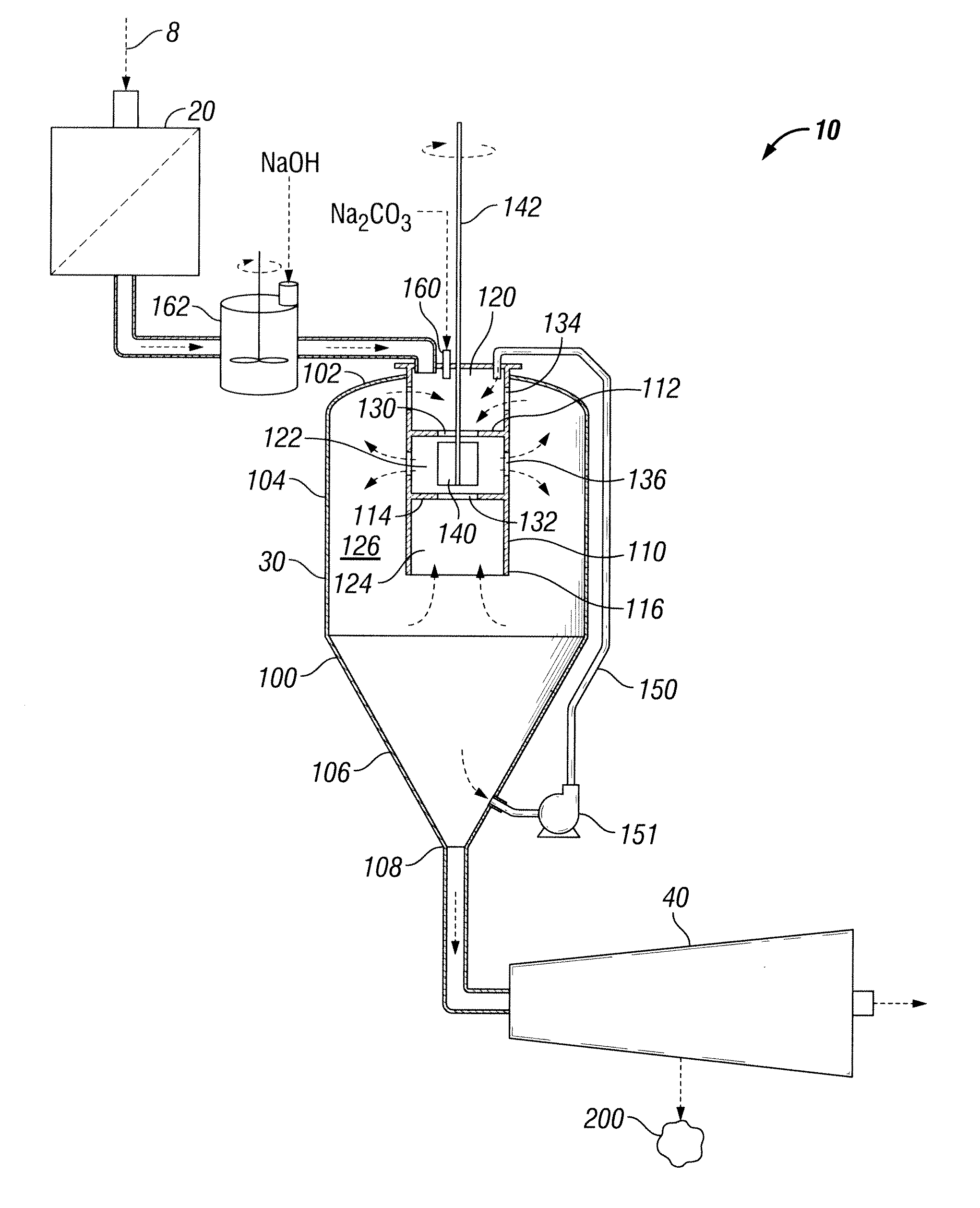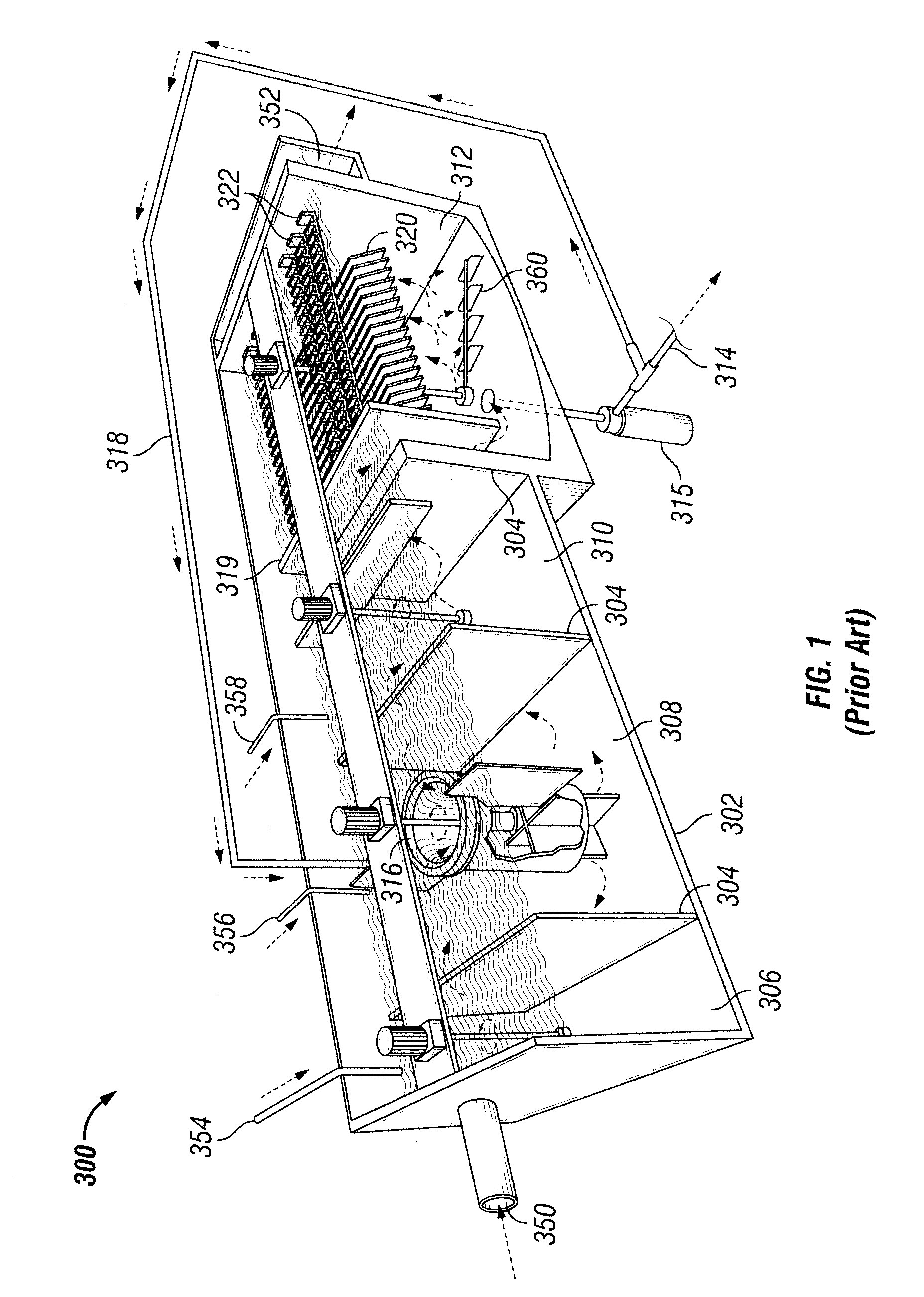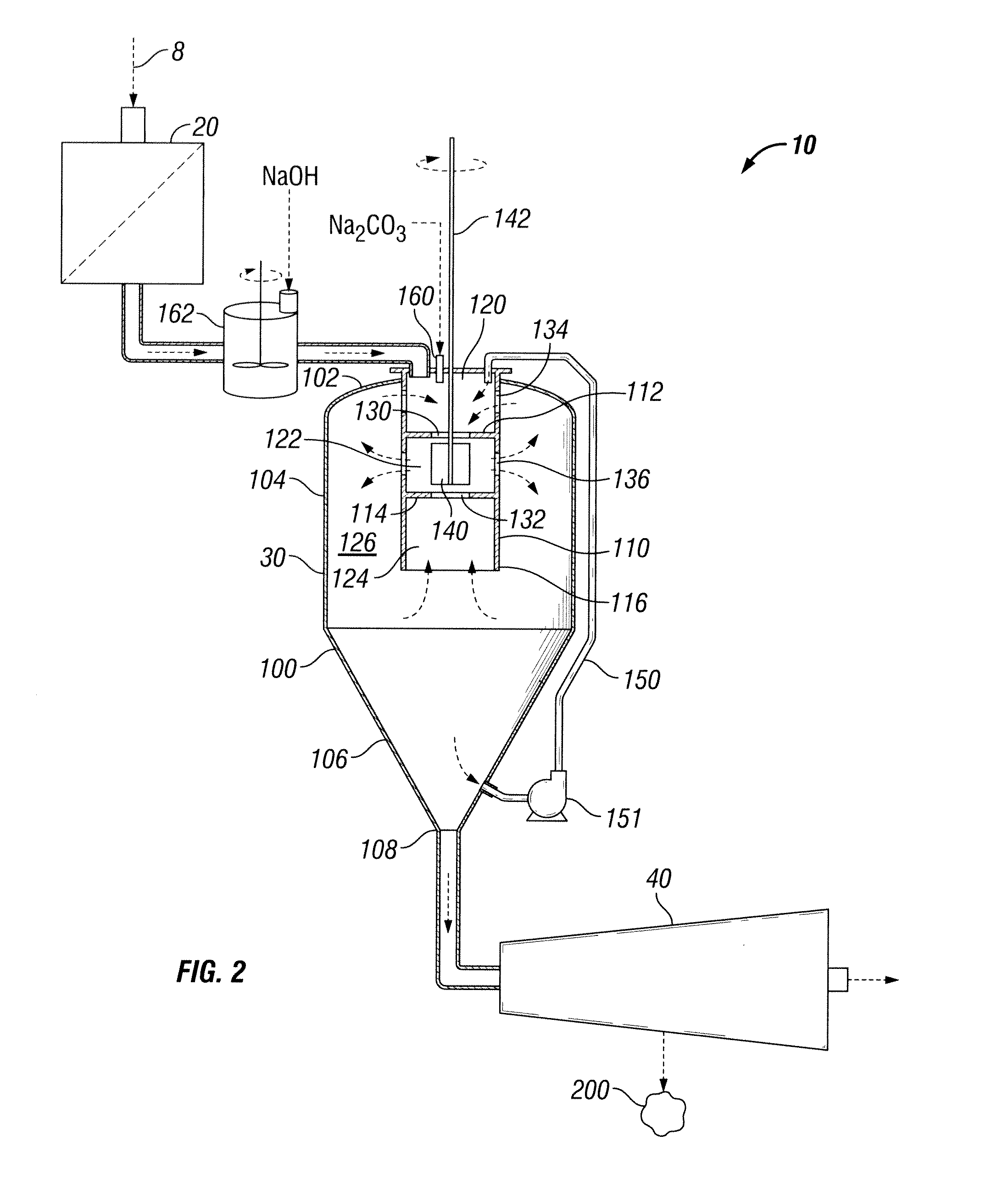Method and apparatus for treating well flow-back and produced water or other wastewater
a technology of flow-back and produced water, applied in the field of water treatment, can solve the problems of insufficient suspension of larger flocs, achieve the effects of promoting crystal growth, enhancing precipitation, and promoting growth
- Summary
- Abstract
- Description
- Claims
- Application Information
AI Technical Summary
Benefits of technology
Problems solved by technology
Method used
Image
Examples
first embodiment
[0061]FIG. 6 illustrates clarifier silo 30 of FIG. 3, except that a portion of diffuser 110 is also cut away to reveal the arrangement of its various interior chambers according to a Diffuser 110 includes upper and lower transverse interior bulkheads 112, 114. Accordingly, diffuser 110 defines three interior chambers: An upper chamber 120 located above upper bulkhead 112; a middle chamber 122 located between upper and lower bulkheads 112, 114; and a lower chamber 124 located below lower bulkhead 114. An annular region 126 is defined outside of diffuser 110.
[0062]Upper bulkhead 112 has a central inlet port 130 formed therethrough that allows axial fluid flow into middle chamber 122 from upper chamber 120. Radial apertures 134 formed in the wall of diffuser 110 about upper chamber 120 allow fluid communication between annular region 126 and upper chamber 120. Similarly, lower bulkhead 114 includes a central inlet port 132 formed therethrough that allows axial fluid flow into middle c...
second embodiment
[0065]FIG. 8 illustrates clarifier silo 30 of FIG. 3, except that a portion of diffuser 110′ is also cut away to reveal the arrangement of its various interior chambers according to a FIG. 9 is a detailed perspective view of the diffuser 110′ and mixer 140′ of FIG. 8, shown with diffuser 110′ in axial cross section. Referring to both FIGS. 8 and 9, unlike diffuser 110 of FIGS. 6 and 7, diffuser 110′ does not includes transverse interior bulkheads. Rather the three interior chambers of diffuser 110′—upper chamber 120, middle chamber 122, and lower chamber 124—are demarked by mixer 140′. Mixer 140′ includes an upper propeller 141 and a lower propeller 143. Upper chamber 120 is located above upper propeller 141. Middle chamber 122 is located below upper propeller 141 and above lower propeller 143. Lower chamber 124 is located within diffuser 110′ below lower propeller 143.
[0066]Upper propeller 141 is pitched so that when rotated, fluid axially flows from upper chamber 120 into middle ...
PUM
| Property | Measurement | Unit |
|---|---|---|
| pH | aaaaa | aaaaa |
| circumference | aaaaa | aaaaa |
| area | aaaaa | aaaaa |
Abstract
Description
Claims
Application Information
 Login to View More
Login to View More - R&D
- Intellectual Property
- Life Sciences
- Materials
- Tech Scout
- Unparalleled Data Quality
- Higher Quality Content
- 60% Fewer Hallucinations
Browse by: Latest US Patents, China's latest patents, Technical Efficacy Thesaurus, Application Domain, Technology Topic, Popular Technical Reports.
© 2025 PatSnap. All rights reserved.Legal|Privacy policy|Modern Slavery Act Transparency Statement|Sitemap|About US| Contact US: help@patsnap.com



